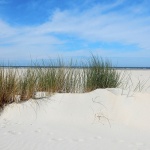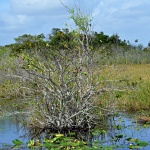There are jewels tucked away in a partially secluded area in south Florida. There is a rich amount of them, in fact they’re so numerous, it’s as if they are ten thousand of them, Ten Thousand Islands or so they are aptly named. It’s an enormously vast expanse of mangrove clusters and small islands that are so close to each other, they form a complex labyrinth of patches of green, when seen from above. A trip to this treasure hoard is best experienced through a glider plane, where you can see this amazing handiwork of Mother Nature from a bird’s eye view then dive down like the swallows and the seabirds around the area to traverse the islands while gliding on the salty shallows and be lost in its alluring mysteries.
Stop by in one of the islands and find yourself in complete isolation. Be detached from the hustle and bustle and the daily grind of the city life. Here, you can find absolute silence with only the gentle swooshing of the tropical breeze, the squawking of birds and the splashing of water are the ones to break it.
The Ten Thousand Islands are a chain of islands and mangrove islets off the shoreline of southwest Florida, between Cape Romano (at the southern end of Marco Island) and the mouth of Lostman’s River. A portion of the islands are high spots on a submergent coastline. Others were created by mangroves developing on shellfish bars. Regardless of the name, the islets in the chain just number in the hundreds
The northern section of the Ten Thousand Islands, between Cape Romano and Everglades City, is in the Ten Thousand Islands National Wildlife Refuge. The southern piece of the Ten Thousands Islands, south of Everglades City, is in Everglades National Park. The 99-mile long Wilderness Waterway starts at Everglades City and closures at Flamingo at the southern tip of the Florida landmass. Ten Thousand Islands National Wildlife Refuge secures 35,000-acres of land maze of mangrove islands, freshwater and saltwater swamps, saline lakes, winding channels, sandy shorelines, and shallow straights. Different imperiled species, including the Florida manatee and Atlantic loggerhead turtle, discover protection in the preserve, which is likewise home to about 200 avian and fish species. While large portions of the feathered creatures are transitory, natural life usually spotted year-round includes egrets, green ocean turtles, manatees, bottlenose dolphins, waterway otters, and a variety of occupant flying birds, for example, cormorants, egrets, herons, and ospreys.
Situated on Florida’s southwest drift east of Marco Island, the asylum principally offers water-based action requiring a water vessel. What’s more, since it’s anything but easy to get lost among the mangroves, paddling or kayaking with a guide is suggested for first-time guests. Both are available by means of the asylum stopping area on U.S. 41 close mile marker 31. The parking space is likewise the starting point for four kayak trails.
It’s surprising that not many people have heard of this place and the fact that this statement comes from the people of Florida even more surprising to us. However, this is what makes this place even more alluring, is the fact that not many people know this place. There is a quiet sanctity to be found here. And you might just be one of the lucky ones who read this article before this hidden prize becomes known to everybody.










